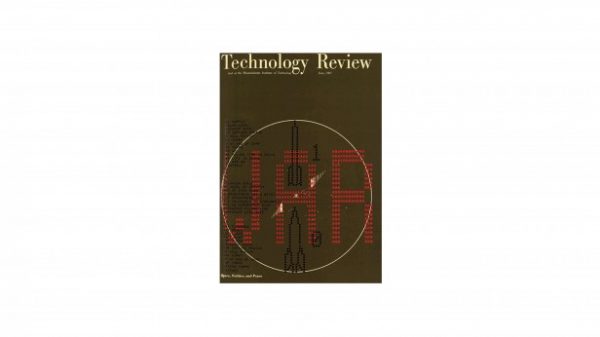Looking back at the future of warfare – MIT Technology Review
Tech Policy
Our war coverage through the years has emphasized how technology might change the way wars are fought—or how it could help us avoid conflict in the first place.
June 1967
From “The first battle of World War III”: World War I was fought with chemistry, and World War II with physics …. World War III, if it ever occurs, may be fought bloodlessly with mathematics. It is not wholly inconceivable that two opposing general staffs will gather some day in full battle dress for a morning’s war at an international computer center. At preliminary low-level conferences they will have already agreed on a computer program and, like attorneys at a pre-trial hearing, stipulated essential input data. All that will remain to be done on the fateful morning will be to push the “start” button and wait for the computer to wage the war 10,000 times. We can envision one commander- in-chief pushing aside a sheaf of print-outs that he has been poring over. “Okay,” he says. “You wiped us out 9,327 times. I’ll tell my Prime Minister to pull out of the Balkans.”
April 1984
From “The Fallacy of Laser Defense”: During a televised address to the nation on March 23, 1983, President Reagan surprised many viewers by proposing a long-term plan to shield the United States against nuclear attack … Despite the Reagan administration’s rhetoric about making nuclear weapons obsolete through defense, the Pentagon is already studying how to penetrate a future Soviet BMD (ballistic-missile defense) system. Under a program operated by the Defense Nuclear Agency at a yearly cost of $3.5 million, pieces of U.S. ICBMs have been exposed to lasers modeled after those used in Soviet research, so engineers can develop countermeasures. DARPA is also working on laser-resistant materials … In sum, as military analyst Thomas Karas has written, “As long as both sides are determined to maintain it, assured destruction is bound to be mutual.
December 2001
From “Recognizing the Enemy”: Of all the dramatic images to emerge in the hours and days following the September 11 attacks, one of the most haunting was a frame from a surveillance-camera video capturing the face of suspected hijacker Mohamed Atta as he passed through an airport metal detector in Portland, ME. Even more chilling to many security experts is the fact that, had the right technology been in place, an image like that might have helped avert the attacks. According to experts, face recognition technology that’s already commercially available could have instantly checked the image against photos of suspected terrorists on file with the FBI and other authorities. If a match had been made, the system could have sounded the alarm before the suspect boarded his flight.






